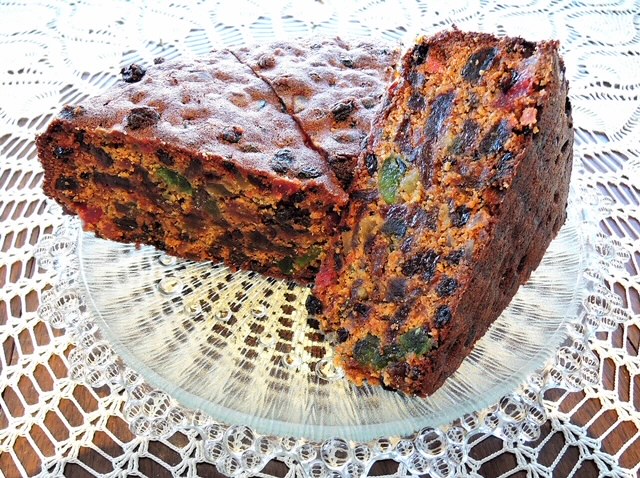Fruitcake often tops lists of “Don’t eat this” around Christmas time because of the calories, sugar, booze and their ability to last and last and last. Fruited breads and cakes have been around since at least Ancient Rome, though the one you received last year probably wasn’t baked back then. Fruitcakes do have their supporters and cherished family recipes abound, yet others take a hard pass on the baked concoctions. (Perhaps it’s the glowing green cherries.) Despite the bad reputation of fruitcake, you can still enjoy some of the individually delicious and nutritious ingredients found in them.
CHERRIES
Cherries are antioxidant powerhouses. They are rich in vitamin C and anthocyanins, which combat inflammation, plus beta carotene (vitamin A). Heart healthy with 260 mg potassium per cup and containing cholesterol-lowering sterols, cherries are also a good source of fiber. Fresh cherries peak in summer but frozen ones are available year-round and are a delicious addition to oatmeal or green smoothies. Eat dried cherries out of hand or mix with nuts for a snack.
PINEAPPLE
It’s pineapple in the U.S., but elsewhere it’s ananas, meaning “excellent fruit.” (I can agree with that, especially when I can find them for less than $2 each.) As with other citrus fruit, pineapple is an excellent source of vitamin C and a good source of thiamin, niacin, and other B vitamins as well as fiber. It’s especially rich in manganese, which helps with immune response, metabolism, and bone formation. Grill fresh pineapple to bring out more of its sweetness, drizzle with lime juice and sprinkle with chopped mint for dessert. Pair with cottage cheese, which is high in protein, for a snack or light breakfast, or eat it on its own.
PECANS
This southern food staple has more monounsaturated fats (a healthy fat) than almonds, cashews, or pistachios, and a little more fiber than walnuts. Pecans are rich in flavonoids, zinc, thiamin, and copper. If eating on their own, toast first to enhance the flavor and texture.
RAISINS
Raisins are a surprisingly polarizing fruit. Some love them and others love to hate them. But dried grapes are versatile, shelf stable and budget friendly. Fresh grapes are available year-round. They are a good or excellent source of copper, vitamin K, and fiber, with small amounts of thiamin, riboflavin, and vitamin B6. Grapes are 80% water, so they can help with hydration, and raisins are being studied as an alternative to athletic chews. Both work well in salads and on-the-go snacks. Roast fresh grapes and pair with meats and cheeses.
DRIED APRICOTS
Apricots are high in the antioxidant beta-carotene, which has been linked to better brain functioning and a lower risk of developing type 2 diabetes, as well as fiber, potassium, and vitamin E. Delicious on their own, dried apricots pair well in savory salads and chicken dishes.

Photo: Pixabay



